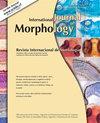利用x线平片分析安纳托利亚人群钩骨和月骨的腕部形态变化
IF 0.5
4区 医学
Q4 ANATOMY & MORPHOLOGY
引用次数: 0
摘要
本研究旨在评估腕部(月骨)解剖在安那托利亚(土耳其)人口中月骨形态的平片发生率,并伴有人口统计学分析。我们获得了所有患者的人口学特征、诊断和后前路(PA) x射线成像的本文章由计算机程序翻译,如有差异,请以英文原文为准。
Analysis of Wrist Morphology Through Hamate and Lunate Bone Variations in Anatolian Population Using Plain Radiography
The present study aimed to evaluate wrist (lunate) anatomy in terms of the incidence of lunatum morphology on plain-radiographs among the Anatolian (Turkey) population, accompanied by demographic analysis. We obtained all the patientsâ data regarding demographical features, diagnosis, and posteroanterior (PA) X-ray imaging. Two radiograph-reviewers repeated the analysis twice, one month later, blinded to their findings before the previous review. The lunatum structure was determined as Type-1 (n:293) and Type-2 (n:207) for each radiograph. Most of the 500 wrists' radiographs [n:293 (58.6 %)] were type-I lunate. The mean age was 36.7±13.3 (range:18-90) years. Sex distribution was as follows: 185 (63.1 %) males to 108 (36.9 %) females. Type-2 lunate was seen in 207 participants (41.4 %). The mean age for type-2 was 41.6±15.2 (18-88) years. 142 (68.6 %) participants were male sex, while 65 (31.4 %) were females. The mean age of subjects with type-I showed a difference with type-II (p=0.007). There was no relationship in terms of sex (p=0.206) between the groups. In the Anatolian region, type-1 lunate was dominant compared to type-2. The incidence rate of lunate type in Anatolian population was similar to the Arab population.
求助全文
通过发布文献求助,成功后即可免费获取论文全文。
去求助
来源期刊

International Journal of Morphology
ANATOMY & MORPHOLOGY-
CiteScore
0.90
自引率
20.00%
发文量
110
审稿时长
3-8 weeks
期刊介绍:
The International Journal of Morphology (Revista Internacional de Morfología) (Print ISSN 0717-9367; Online ISSN 0717-9502) is an official publication of the Chilean Society of Anatomy, Argentine Association of Anatomy and Panamerican Association of Anatomy. It is the continuation of Revista Chilena de Anatomía (Chilean Anatomical Journal) and is published bimonthly. The six issues published yearly constitute one volume. This journal covers morphology in all its aspects, Gross Anatomy, Histology and Developmental Biology, as well as human and animals morphological aspects, including Celular, Molecular, systems or Evolutionary Biology. Reviews, short and brief communications and Letters to the Editor are also accepted.
 求助内容:
求助内容: 应助结果提醒方式:
应助结果提醒方式:


